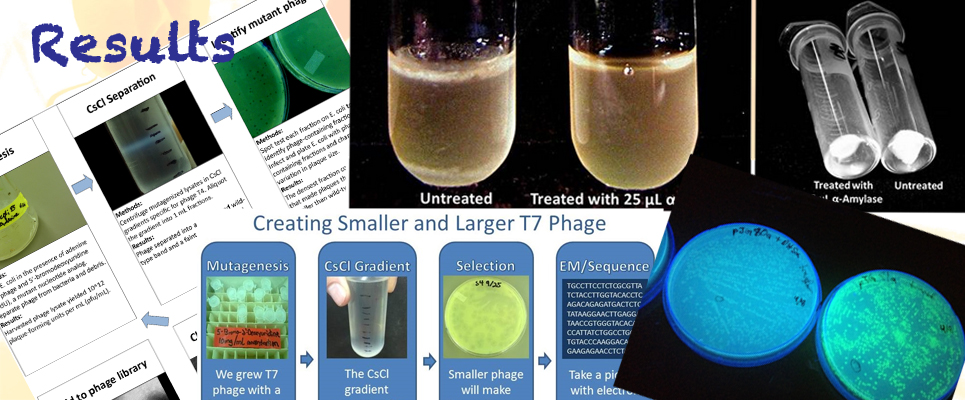Team:BYU Provo/Results
From 2013.igem.org
| (6 intermediate revisions not shown) | |||
| Line 1: | Line 1: | ||
{{TeamBYUProvo}} | {{TeamBYUProvo}} | ||
| - | + | [[File:BYUResults.JPG|965px|center|link=Team:BYU_Provo/Results/Experimental]] | |
| - | + | ||
| - | + | ||
| - | + | ||
| - | + | ||
| - | + | ||
| - | + | ||
| - | + | ||
| - | + | ||
| - | + | ||
| - | + | ||
| - | + | ||
| - | + | ||
| - | + | ||
| - | + | ||
| - | + | ||
| - | + | ||
| - | + | ||
| - | + | ||
| - | + | ||
| - | + | ||
| - | + | ||
| - | + | ||
| - | + | ||
| - | + | ||
| - | + | ||
| - | + | ||
| - | + | ||
| - | + | ||
{| width="100%" style="text-align: top;" | {| width="100%" style="text-align: top;" | ||
| Line 46: | Line 18: | ||
'''Phage Library''' | '''Phage Library''' | ||
| - | This summer, we developed a cesium chloride gradient protocol for isolating larger and smaller phage. Utilizing this gradient, we were able to isolate mutant T4 bacteriophages that have distinctively | + | This summer, we developed a cesium chloride gradient protocol for isolating larger and smaller phage. Utilizing this gradient, we were able to isolate mutant T4 bacteriophages that have distinctively smaller capsids and less variability in capsid size when compared to the wild type. Similarly, we were also able to isolate mutant T7 bacteriophages that have smaller and larger than average capsid sizes. |
| + | |||
| + | <br> | ||
'''Cholera''' | '''Cholera''' | ||
Latest revision as of 23:58, 28 October 2013
|
Phage Library This summer, we developed a cesium chloride gradient protocol for isolating larger and smaller phage. Utilizing this gradient, we were able to isolate mutant T4 bacteriophages that have distinctively smaller capsids and less variability in capsid size when compared to the wild type. Similarly, we were also able to isolate mutant T7 bacteriophages that have smaller and larger than average capsid sizes.
Cholera To tackle the disease Cholera, we identified a protein, Amylase, that disrupt Cholera's biofilm formation. In addition, we demonstrated that E. coli is capable of sensing Cholera and hypothesize that it does so through its SdiA protein. In fact, Cholera can induce Lambda from lysogenic E. coli.
|
|
|
 "
"
